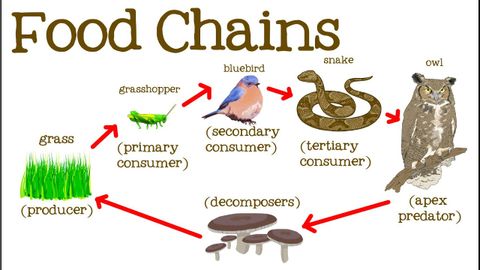
Subtitles & vocabulary
Food Chains for Kids: Food Webs, the Circle of Life, and the Flow of Energy - FreeSchool
00
薛明璟 posted on 2018/01/18Save
Video vocabulary
recognize
US /ˈrek.əɡ.naɪz/
・
UK /ˈrek.əɡ.naɪz/
- Transitive Verb
- To accept the truth or reality of something
- To consider something as important or special
A2TOEIC
More matter
US /ˈmætɚ/
・
UK /'mætə(r)/
- Intransitive Verb
- To be of great importance; to count
- Uncountable Noun
- Material all things are made of that fills space
A1TOEIC
More consume
US /kənˈsum/
・
UK /kən'sju:m/
- Transitive Verb
- To eat, drink, buy or use up something
- To take all your energy; focus the attention
A2TOEIC
More bacteria
US /bækˈtɪriə/
・
UK /bæk'tɪərɪə/
- Noun (plural)
- The very small creatures that can cause disease
B2
More Use Energy
Unlock All Vocabulary
Unlock pronunciation, explanations, and filters
